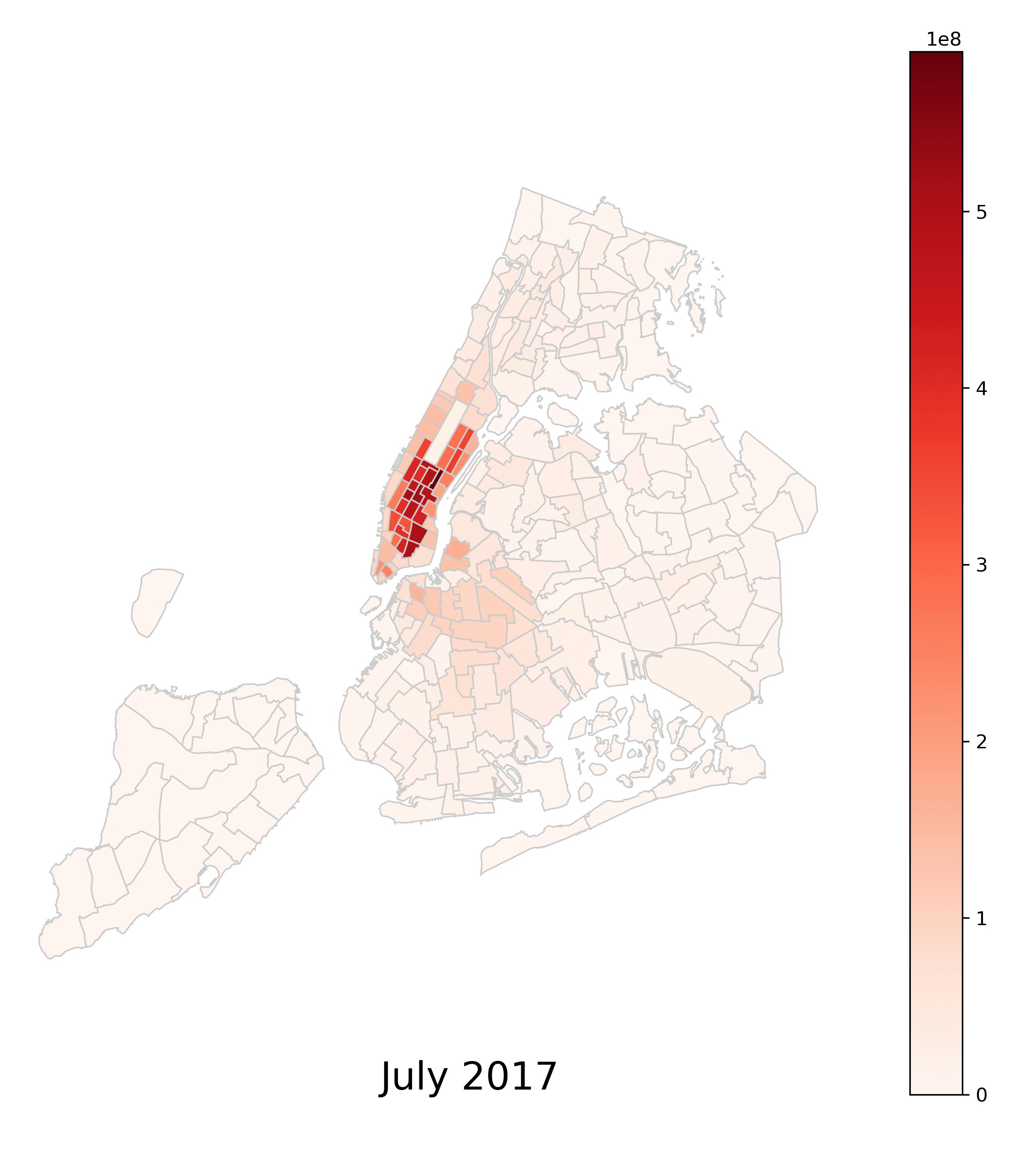Impact of ride-sharing in New York City
Overview
Ride-sharing is now being offered across the globe by UberPOOL, Lyft Shared, and similar solutions, which ultimately change the landscape of urban commutes. However, its holistic impact on the complex urban system, including urban traffic, environment, economy, and urban society with respect to the associated mode shift in multi-modal urban transportation, innovation adoption dynamics, etc., are not fully understood. Using ridership data from ridesharing providers, mobile phone data, as well as a variety of other publicly available data, this project aims to develop a comprehensive holistic model of urban transportation demand given multiple available modes, including for-hire vehicles and their shared options. The model will enable assessment of the impact of shared mobility on urban transportation mode choice, which can be further translated into economic, social, and environmental impacts.
Research Objectives
Understanding the holistic impact of planned transportation solutions and interventions on urban systems is challenged by their complexity but critical for decision making. The cornerstone for such impact assessments is estimating the transportation mode-shift resulting from the intervention. And while transportation planning has well-established models for the mode-choice assessment such as a nested multinomial logit model, an individual choice simulation could be better suited for addressing the mode-shift allowing to consistently account for individual preferences. In addition, no model perfectly represents reality while the available ground-truth data on the actual transportation choices needed to infer the model is often incomplete or inconsistent.
The project addresses those challenges by offering an individual mode-choice and mode-shift simulation model and the Bayesian inference framework. It accounts for uncertainties in the data as well as the model estimate and translates them into uncertainties of the resulting mode-shift and the impacts. The framework is evaluated on the two intervention cases: introducing ride-sharing for-hire-vehicles in NYC as well as the recent introduction of the Manhattan Congestion Surcharge. Being successfully evaluated on the cases above, the framework can be used for assessing mode-shift and resulting economic, social, and environmental implications for any future urban transportation solutions and policies being considered by decision-makers or transportation companies.
Visualization of the temporal and spatial distributions of the impact of ride-sharing across NYC in terms of savings in miles driven by for-hire vehicles.
Deliverables
The project constructed the simulation modeling and probabilistic inference framework suitable for the assessment of city-scale impacts of transportation innovations and policies on the transportation system along with the associated environmental and economic implications with respect to the uncertainty of such impacts. The framework applicability is illustrated in two use cases: introduction of shared FHV in NYC and Manhattan Congestion Surcharge. The framework is capable of learning from diverse and possibly inconsistent datasets (such as historic transportation surveys and actual taxi and FHV ridership) providing partial information on urban mobility, stepwise gaining information from either source.
Broadly, our results indicate that shared mobility helped to decrease travel times between 1-2% for all categories of passengers. However, it does so by increasing the traffic up to 0.5-1.5% – decreases from trip sharing seem to be offset by a growing number of riders due to increased affordability of the service. It works more efficiently for high-income categories of passengers providing higher travel time decrease with lower mileage increase. On the other hand, the Manhattan congestion surcharge noticeably decreases the FHV traffic of up to 1%, however, it does so at the price of increased travel time and in particular for high-income travelers, who are perhaps the most frequent users of taxis and FHVs, to which the surcharge is targeted. The uncertainty analysis confirms the statistical significance of the impacts as well as their heterogeneity across populations. The impacts above are further translated into the total traffic, gas consumption, emissions, monetary savings, and MTA earnings implications.
While we hope that this study can be a proof of concept for other cities considering shared mobility, congestion pricing, or other similar interventions, it should be noted that New York City’s transportation system is unique in many ways, and makes a switch to public transportation more practical than in many other cities.
Personnel
| Principal Investigator | Stanislav Sobolevsky, NYU |
| Funding Source | C2SMART Center and cost-share provided by Arcadis |
| Total Project Cost | $90,000 |
| USDOT Award # | 69A3551747124 |
| Start and End Dates | 03/01/2019-08/31/2020 |
| Implementation of Research Outcomes | The key outcome of the project is the holistic impact assessment of ridesharing and/or other transportation interventions like congestion charge, implemented through the probabilistic simulation modeling framework efficiently leveraging available multi-layered transportation data. Project outcomes will be evaluated in cooperation with actual urban policymakers and stakeholders (DOT, TLC, Uber, Lyft, transportation consulting companies) and recommendations will be given for implementing the framework in urban transportation practice at a broader scale. |
| Impacts/Benefits of Implementation | The project will provide the methodology to inform transportation planners and stakeholders about potential benefits and downsides of implementing digital ridesharing and/or other transportation interventions and policies using available multi-layered transportation data. In addition the framework will support transportation planners with travel demand estimation and a hierarchical structuring of an urban transportation system |













